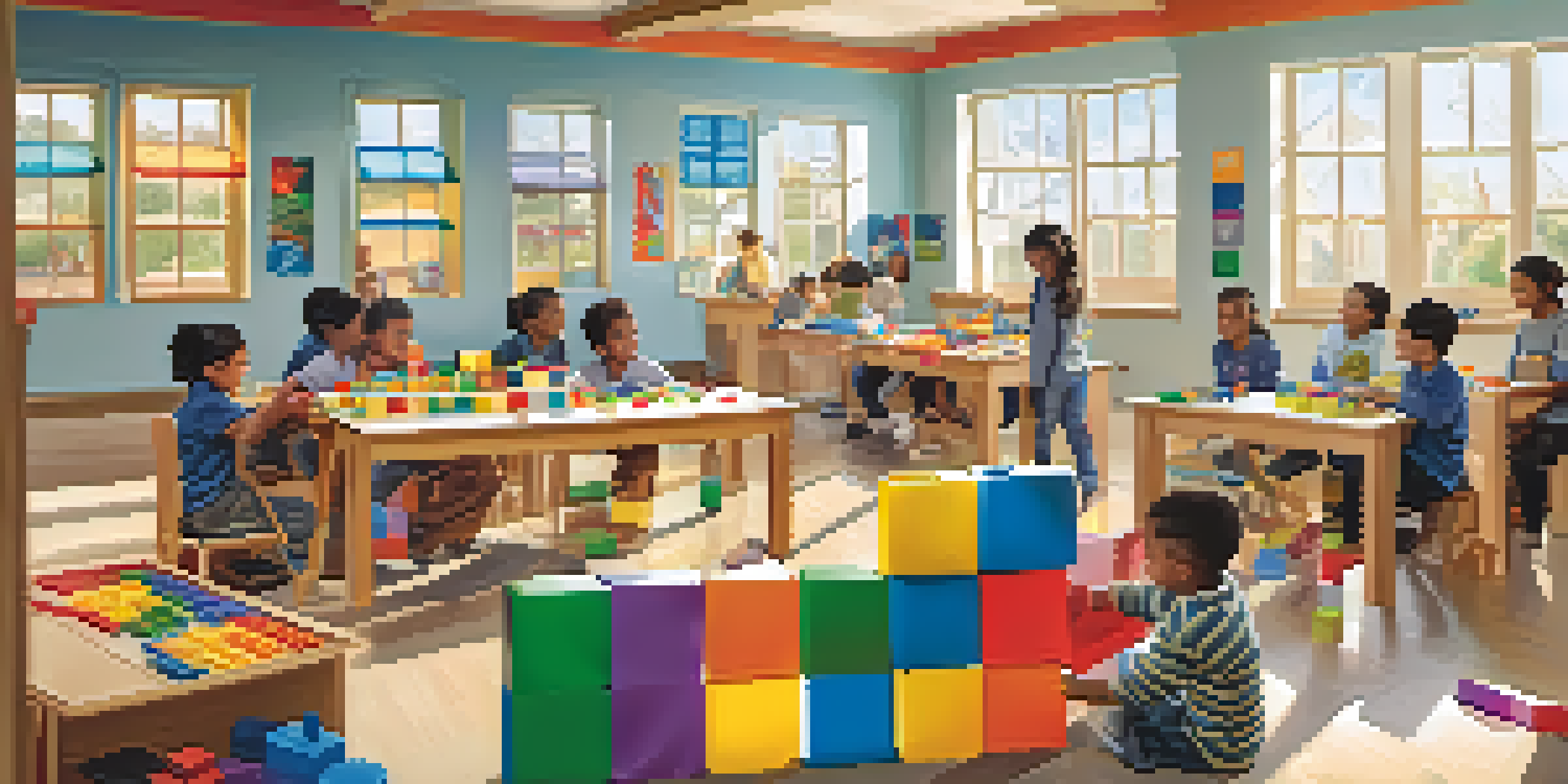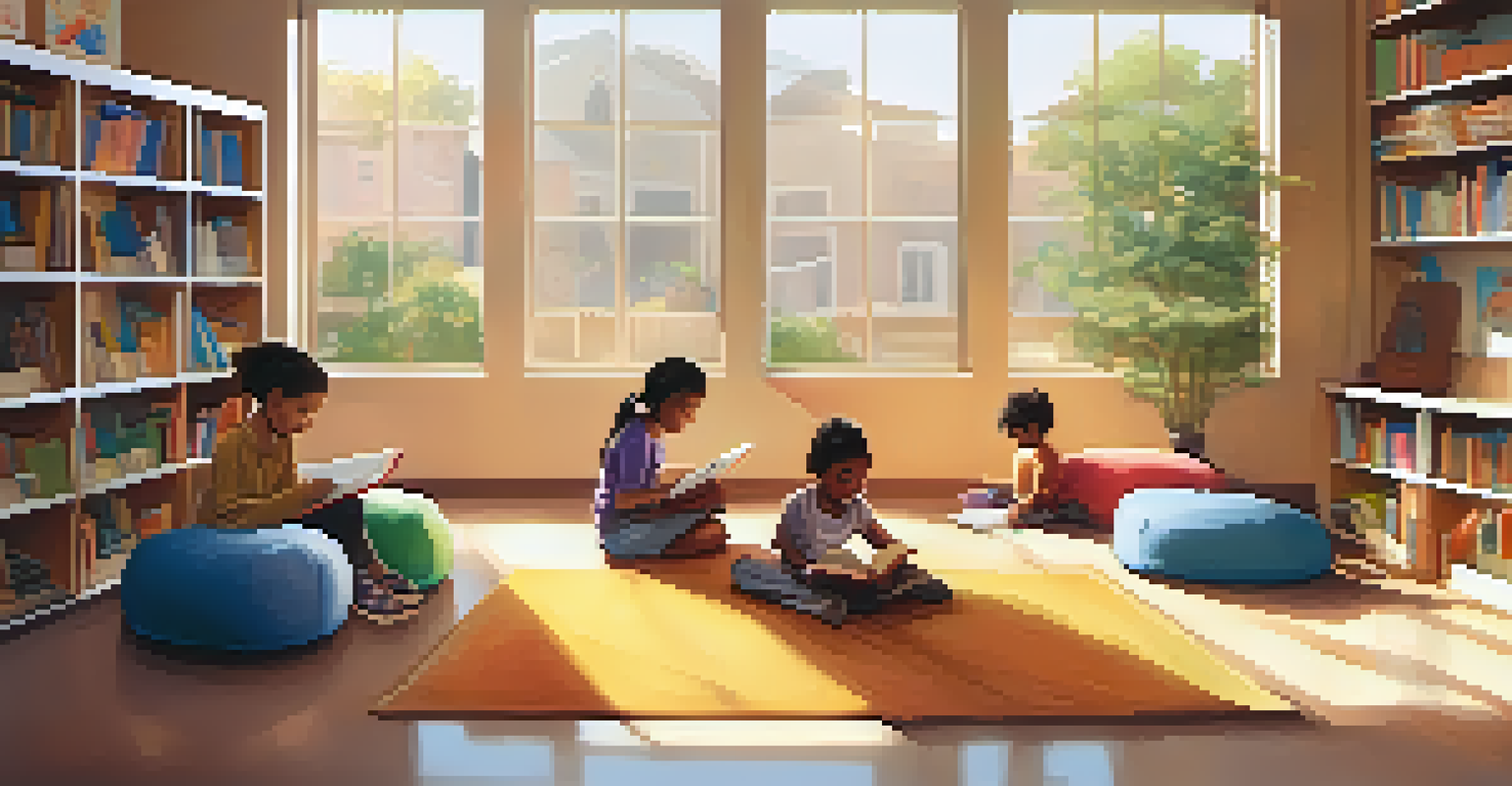Play as a Medium for Learning: Strategies for Educators

Understanding the Role of Play in Learning
Play is not just a pastime; it’s a powerful tool for learning. By engaging in play, students can explore concepts in a hands-on manner, fostering deeper understanding. This approach aligns with developmental theories that emphasize experiential learning, where children learn best through doing.
Play is the highest form of research.
When educators incorporate play into their teaching strategies, they create an environment where students feel safe to experiment and take risks. For instance, using role-playing scenarios can help students grasp complex social dynamics or historical events. This method not only makes learning enjoyable but also memorable.
Ultimately, play serves as a bridge between theory and practice, allowing students to apply what they learn in real-world contexts. By understanding the pivotal role of play, educators can design more effective and engaging learning experiences.
Incorporating Games into the Curriculum
Games can transform traditional lessons into interactive adventures. Whether it’s a math game that turns equations into a competitive challenge or a vocabulary game that encourages word exploration, the possibilities are endless. This not only boosts engagement but also enhances retention of information.

For example, consider using a classroom Jeopardy game to review key concepts before exams. This format not only makes studying fun but also encourages teamwork and communication among students. By fostering a playful atmosphere, educators can stimulate curiosity and motivation.
Play Enhances Learning Engagement
Incorporating play into education fosters a hands-on approach that boosts student engagement and retention.
Integrating games into the curriculum also allows students to learn at their own pace. Some may grasp concepts quickly, while others might need more time, and games can be adapted to suit diverse learning needs, ensuring inclusivity in the classroom.
Creative Storytelling as a Learning Tool
Storytelling is an ancient art that captivates and educates, making it a fantastic medium for learning. When students create their own stories, they engage critically with the material, allowing for personal expression and creativity. This method can be particularly effective in subjects like literature and history.
The more that you read, the more things you will know. The more that you learn, the more places you'll go.
For instance, asking students to rewrite a historical event from the perspective of a different character can deepen their understanding of multiple viewpoints. This not only enhances comprehension but also develops empathy and critical thinking skills.
Moreover, integrating multimedia elements—like illustrations or digital storytelling tools—can further enrich the storytelling experience. By embracing creativity, educators can tap into the imaginative capabilities of their students, making learning a thrilling adventure.
Using Role Play to Enhance Understanding
Role play is a dynamic way to immerse students in real-life scenarios, making abstract concepts tangible. By stepping into different roles, students can explore various perspectives, whether in science, literature, or social studies. This method encourages collaboration and communication, essential skills for the 21st century.
For example, in a science class, students could enact a debate on climate change policies, allowing them to research and understand multiple angles of a complex issue. This method not only deepens comprehension but also enhances public speaking and critical thinking skills.
Games Foster Collaborative Skills
Using games in the classroom promotes teamwork and communication, essential skills for student development.
Furthermore, role play promotes emotional engagement with the material. When students connect personally to the content, they are more likely to retain information and apply it in real-world situations, making learning impactful and relevant.
Outdoor Learning: Bringing Play to Nature
Taking learning outside the classroom can invigorate students’ minds and bodies. Outdoor learning often involves play, whether through nature walks, scavenger hunts, or interactive science experiments. This connection with nature not only fosters curiosity but also promotes physical well-being.
For instance, a simple nature scavenger hunt can teach students about biodiversity while they enjoy the fresh air. This hands-on approach allows them to observe and interact with their environment, enhancing their understanding of ecological concepts in a fun way.
Moreover, outdoor learning can serve as a break from the traditional classroom setting, reducing stress and increasing focus. By incorporating play in nature, educators can create a refreshing and enriching learning experience.
Building Collaboration Through Team Activities
Collaboration is a crucial skill in today’s world, and play can facilitate this effectively. Group activities, such as team sports or cooperative games, not only teach students to work together but also to communicate and problem-solve. These experiences build a sense of community and belonging within the classroom.
Consider organizing a group project where students must build a structure using limited resources. This exercise encourages them to brainstorm, delegate tasks, and support each other’s ideas. Through collaboration, they learn the importance of teamwork and collective effort.
Creative Storytelling Boosts Empathy
Engaging in creative storytelling allows students to explore different perspectives, enhancing their empathy and understanding.
Moreover, team activities can help break down social barriers, allowing students to form connections with peers they might not interact with otherwise. By fostering collaboration through play, educators can cultivate a positive and inclusive classroom environment.
Assessing Learning Through Playful Methods
Assessments don’t always have to be traditional tests; playful methods can provide valuable insights into student learning. Educators can use games, projects, or creative presentations to evaluate understanding in a way that feels less intimidating. This can lead to more authentic demonstrations of knowledge.
For example, instead of a written exam, students could create a video presentation summarizing a topic. This format allows for creativity while also assessing their grasp of the material. Such assessments can be more enjoyable and less stressful for students.

Furthermore, playful assessments can cater to diverse learning styles, ensuring that every student has a chance to shine. By embracing different evaluation methods, educators can gain a more comprehensive understanding of student progress and areas for improvement.
Creating a Play-Friendly Learning Environment
To truly harness the power of play in education, creating a supportive environment is essential. This includes flexible spaces where students can move freely, access to diverse resources, and a culture that encourages exploration and creativity. Such an atmosphere nurtures curiosity and engagement.
For instance, incorporating playful elements like bean bags for reading corners or art supplies for creative projects can inspire students to learn in a relaxed manner. When students feel comfortable and valued, they’re more likely to take risks and engage in the learning process.
Moreover, fostering a growth mindset within the classroom can empower students to view challenges as opportunities for learning. By celebrating effort and creativity, educators can cultivate a play-friendly environment that prioritizes exploration and innovation.